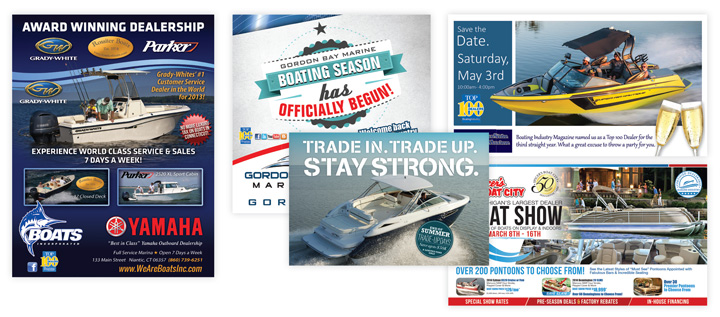The magic and myth of the nouveau media

Digital marketing is important, but don’t ignore the traditional
In the last couple of months, the latest reports to come out about the effectiveness of the digital media, and social media in particular, confirm a belief that I’ve held since the advent of those media, and that I have written about since the 2009 release of my book, How To Market Your Crap When the Economy is in the Toilet.
The 12th chapter of the book is dedicated to what I called then, and confirm now, the “I-Myth.” My basic premise? That digital media are over-rated. That they are seen as a marketing panacea, a silver bullet, and they are currently drawing a disproportionate amount of the marketing time, attention and dollars from business owners. The return on investment seldom justifies that investment.
The recent reports appear to bear me out.
In a Wall Street Journal report earlier this year, the headline reads, “Social Media Fail to Live Up to Early Marketing Hype. Companies Refine Strategies to Stress Quality Over Quantity of Fans.” The same article reports, “Companies have invested money into social media sites, but brands are learning that racking up fans and ‘likes’ is not the same as minting sales.”
A broadcast report from “The Wall Street Journal This Morning” charges that Facebook Mobile advertising investment is up, but consumers don’t pay any attention to it; that response to the ads is down, and that if the trend continues companies are likely to stop using Facebook Mobile ads.
The trouble with that is, more consumers are accessing Facebook on their mobile devices vs. their desktop computers, which means all Facebook advertising is going to get less effective, not more so.
And yet another WSJ report quotes an English study’s findings that consumers claim they are not influenced by Facebook and Twitter, and in fact, they are distrustful of the commercial content on both platforms. They feel like reviews are often “plants” by companies, and that companies hide their unfavorable reviews.

The message is not to ignore online marketing and social media, but rather to appoint to them the appropriate amount of time, attention and financial resources, just as you would the traditional media like radio, TV, print, direct mail and outdoor.
I would go a step further, in fact, to suggest that your investment in online marketing, including websites, SEO, email marketing and social media, be relegated to secondary positions, and that you reassert your efforts in the traditional media.
I’m not kidding. While the existence of the Internet and the advent of mobile has made marketing in the traditional ways more difficult, research suggests that actually acquiring sales is still done more effectively by the traditional media. Most of the time, the cost of acquisition of new transactions is actually less expensive via traditional media, particularly direct mail.
Has it escaped you that many of these free website building companies are constantly advertising on radio? And none other than Google is always soliciting new AdWords business using direct mail!
I am not saying you should not have a website. You must have one in this day and age. I’m also not saying you should not have a Facebook page or a Twitter account. But leave the marketing pioneering to companies with much bigger pockets than yours… even if they’re just bigger players in the boating industry.
Here are some recommendations.
1. Embrace direct mail
Make direct mail the keystone of your marketing efforts. DM consistently comes in first when it comes to delivering transactions at the lowest cost. That doesn’t mean you should keep doing direct mail the way you always have in the past, however. Get yourself educated as to what works and what doesn’t in direct mail, and make sure you are making compelling offers that your customers and prospects will have trouble refusing.
2. Test your messages online
Use online marketing as a proving ground for your advertising messages. The biggest advantage of online marketing is your ability to inexpensively test and track. You can create different landing pages, send emails with different subject lines and headlines, throw out different offers; and you can track the results to see which generate the greatest interest in the form of opens, click-throughs and conversions. Then, take what you learn about your messages and offers, and apply them to your traditional media, to make them more effective.
3. Go from SEO to PPC
Take the money you are currently spending on search engine optimization and start spending it on Pay Per Click (or Cost Per Click) advertising. Look, Google is going to change the algorithm – again, and again, and again. If you are on page one, you won’t be sooner or later. They’ll tell you it’s to make the search engine more responsive to the consumer, but don’t believe it. It’s to get you to ultimately throw up your hands and say, I’m just gonna buy my position. May as well give in to that now, save the SEO budget and buy the position.
4. Drive to your website
Use traditional media to drive people to your website (it takes a compelling offer). Then, use the website to drive people to your showroom.
5. Justify your value
Since buyers are going to “showroom” you (in other words, come in to see and perhaps “test drive” your products, then go shop online for better prices), make sure you pre-empt that activity by educating prospects in all media, including your website, Facebook, and other social media platforms, as to the extra value you bring to the table that justifies your pricing. Gone are the days of mere price and item marketing. You’d better be able to convince consumers you’re better, or they’ll buy for price elsewhere.
Finally, budget for your digital marketing the way you would any other media. Make a value judgment about the contribution it can make to your top and bottom lines and allocate time, personnel and financial resources according to the reasonable percentage of contribution you realistically expect.
Stop overdoing it.
I know that last paragraph was heresy, but ask yourself this… can I live on my digital marketing efforts alone? Could I, if I were to put all of my marketing resources into my digital efforts? If not now, when might I be able to do that?
Jim Ackerman is president of Ascend Marketing, Inc. and is a Salt Lake City-based marketing consultant, coach and speaker. He can be reached at mail@ascendmarketing.com.




